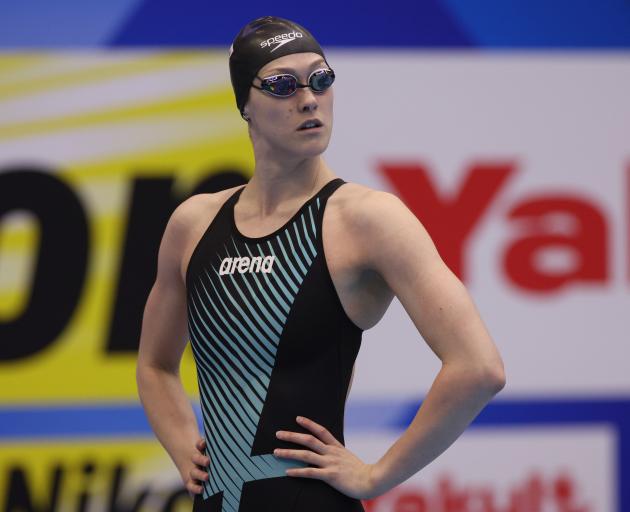
Standing at 1.60m and aged only 15, Walrond became the first woman to represent New Zealand at the Olympics when she competed at Antwerp in 1920.
But her experience of the Games, where she finished fifth in the 100m freestyle final, was in stark contrast to our athletes today.
Walrond had to be accompanied by a chaperone, and while her male counterparts could do as they pleased, she was confined to her hotel room when not competing, unable to watch other sports or explore.
When they returned home, Walrond was excluded from the all-male function honouring the team.
Walrond took pride in the role she played to put women on the map up until her death in 1996.
She would have looked on with pride as the New Zealand swimming team was announced in Dunedin this week — five of the nine athletes selected were female.

"I believe it’s the first year we’ve got an almost even 50-50 split of male-female since the Olympic Games started," Ouwehand, who has been selected alongside Erika Fairweather, Caitlin Deans, Eve Thomas and Laticia Leigh Transom, told The Revolution.
"I think that that’s fantastic. We have seen a lot of female swimmers around the world, but also in our country, rise through like Erika and doing great things."
There are women stamping their mark all over these Olympics.
New Zealand have named their largest women’s canoe sprint team with six athletes, including Otago paddler Lucy Matehaere, selected to wear the fern.
Matehaere and our most successful Olympian, Lisa Carrington, are joined by Alicia Hoskin, Tara Vaughan, Olivia Brett and Aimee Fisher.
Eight of the 15-strong athletics team — Eliza McCartney, Maddi Wesche, Zoe Hobbs, Camille French, Tori Peeters, Lauren Bruce, Imogen Ayris and Olivia McTaggart — are women along with Otago Paralympians Anna Grimaldi and Holly Robinson.
Erica Dawson, Veerle ten Have, Jo Aleh and Molly Meech will compete in sailing, and Sarah Tetzlaff will be the first female speed climber.
Trampolinist Maddie Davidson is off to her second Olympics, after becoming the first Kiwi female in the sport at Tokyo, and Tayla Ford will become the first Kiwi woman to compete in wrestling at the Olympics. Luuka Jones will also line up for a remarkable fifth Olympics in the canoe slalom.
There will be more women unveiled as the countdown continues, but it is poignant to see so many early on.
Paris is expected to be the first gender-equal Olympics internationally.
Woman showed their worth in Tokyo when they won 55% of New Zealand’s medals — including 86% of the golds. Considering female representation was only 48%, that is a good effort.

As always, there is work to be done, but there is no doubt things are heading in the right direction.
But we must never forget the pioneers, such as Walrond, who paved the way for women to even have a chance to strive for gold.
Make her proud.
Across the ditch
Cricket Australia is putting its money where its mouth is.
The organisation has announced its women and girls action plan this week, giving the area a boost in annual revenue of $NZ133 million by 2034.
Women’s cricket generates 5% of the sport’s revenue, but the organisation wanted to boost the annual average attendance at games and participation among players under 12, invest in infrastructure, and have a target of 40% female representation in administration.
It would be nice to see more organisations investing so heavily into the women’s game.











